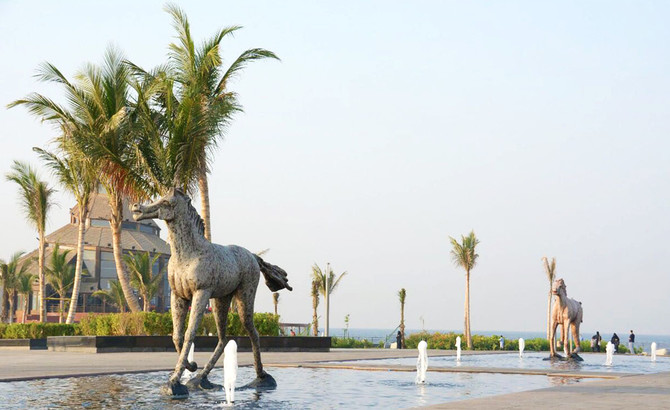JEDDAH: The development of Jeddah’s waterfront has offered new opportunities for artists to display their work. One of them is the world-renowned Syrian sculptor Rabia Al-Akhras.
Al-Akhras was born in Homs and graduated from the Faculty of Fine Arts in Damascus. He has gone on to become one of the most famous sculptors in the world, his work sought-after by museums and private collectors alike. But he gifted his sculptures to the city of Jeddah.
He told Arab News, “I spent most of my life in the city of Jeddah; I am indebted to this city and all that it has given me, and in return I gave it sculptures of three horses, which honors me tremendously. The horses represent an extension of 20 other sculptures I’ve made throughout my life.
“These sculptures were not made with Jeddah specifically in mind, but they suit the city and the waterfront; the ambience of horse tracks is timeless and reflects a kind of passion, heritage and history,” he continued.
“In addition, 80 percent of the designs displayed at the corniche were made by female sculptors, whose work I’ve supervised closely as their mentor. Most of them are my students, many of whom are senior sculptors and university teachers who have many works of their own.”
“It is not the job of the artist to search for a school to belong to,” Al-Akhras said. “An honest designer reflects his innermost self in his work.” The sculptors’ main objective, he explained, was to ensure their designs were compatible with the waterfront.
Al-Akhras said that the majority of his ideas, and his sculptures, have “a strong relationship” with Jeddah, citing the sea, “the city’s crevices and the clear sky” as inspirations.
“All the works displayed at the waterfront will carry this — the inspiration and the internal accumulation of the innermost mind; that is the basis of the sculptures,” he said. “The works are not archaeological but possess a sense of heritage. Archaeological work is that which has lived long, but imitating antiquities is not in itself archaeological, but inspired by it.”
“I love to leave pieces of them missing because it has to do with the concept that we are not complete and are imperfect; this is from an intellectual aspect,” he explained. “But with regard to technicality, my sculptures aim to stimulate the imagination of the recipient so they will fill in the blanks in their own way. That way, it is up to the recipient to imagine the remainder of the sculpture on their own.
“It’s very nice. When we see, for example, the horses’ roundabout in the city of Jeddah, we see the design of horses through the fragmentation of the first horse in the second horse and then back,” he continued. “This beautiful interference triggers movement and the ability to see the unrealized vision, but it exists within the sculpture to create harmony between two blocks and two spaces.”
View more photos of the waterfront's sculptors here.
Rabia Al-Akhras: The man behind Jeddah’s waterfront sculptures
Rabia Al-Akhras: The man behind Jeddah’s waterfront sculptures
















